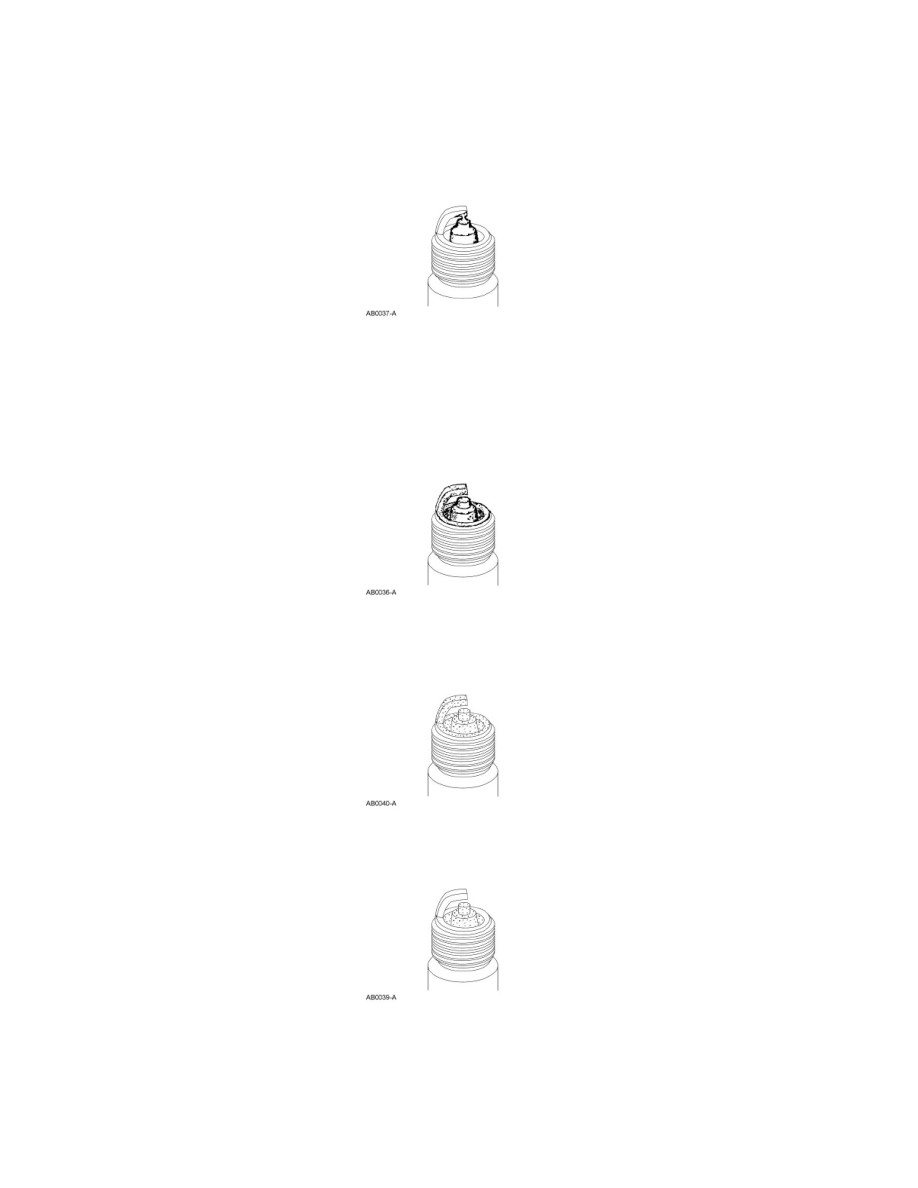F 350 2WD Super Duty V10-6.8L (2009)

Spark Plug: Testing and Inspection
Spark Plug Inspection
1. Inspect the spark plug for a bridged gap.
-
Check for deposit build-up closing the gap between the electrodes. Deposits are caused by oil or carbon fouling.
-
Install a new spark plug.
2. Check for oil fouling.
-
Check for wet, black deposits on the insulator shell bore electrodes, caused by excessive oil entering the combustion chamber through worn
rings and pistons, excessive valve-to-guide clearance or worn or loose bearings.
-
Correct the oil leak concern.
-
Install a new spark plug.
3. Inspect for carbon fouling. Look for black, dry, fluffy carbon deposits on the insulator tips, exposed shell surfaces and electrodes, caused by a
spark plug with an incorrect heat range, dirty air cleaner, too rich a fuel mixture or excessive idling.
-
Install new spark plugs.
4. Inspect for normal burning.
-
Check for light tan or gray deposits on the firing tip.
5. Inspect for pre-ignition, identified by melted electrodes and a possibly damaged insulator. Metallic deposits on the insulator indicate engine
damage. This may be caused by incorrect ignition timing, wrong type of fuel or the unauthorized installation of a heli-coil insert in place of the
spark plug threads.
-
Install a new spark plug.
